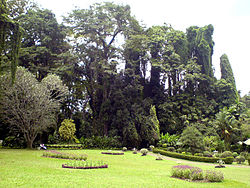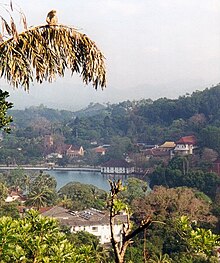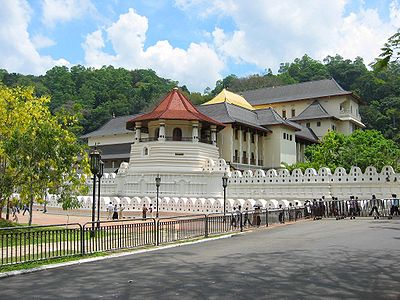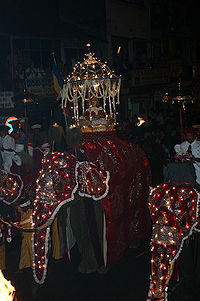User:Netmonger/Sandbox
- http://www.rediff.com/news/2006/nov/27inter.htm
- http://www.tamilnation.org/intframe/india/98dixit.htm#1._On_Indira_Gandhi_and_Indias_Motivations_in_1983
- http://www.atimes.com/ind-pak/DC16Df02.html
- http://bewley.virtualave.net/bukhari49.html

My current time is 22:38 (GMT+5:30)
The term "earworm" is a translation of the German word Ohrwurm, used to describe the "musical itch" of the brain. It is a confusing term, since the phenomenon has nothing to do with small maggot-like creatures crawling into your ear and laying eggs in your brain. The musical earworm actually works more like a virus, attaching itself to a host and keeping itself alive by feeding off the host's memory.
The American philosopher Kenneth Burke once asked: "When a bit of talking is taking place, just what is doing the talking?" Researchers discovered that the talking is done by the auditory cortex, which perceives and stores our auditory memories. And it is the auditory cortex - the "brain's iPod" - that earworms chose as the centre of their activity. At first, the researchers asked the study's 15 students to identify which songs were familiar or unfamiliar to them, thus developing an individualised playlist for each subject. The Rolling Stones' Satisfaction and the Beatles' Yellow Submarine were included among familiar songs with lyrics, and Beethoven's Ode to Joy and the theme from The Pink Panther among familiar instrumental tunes.
"When the subjects were in the MRI scanner, which we used to look at the brain activity, we played them parts of a song and then hit a mute button for three or five seconds," stated David Kraemer, a graduate student of cognitive science and the lead researcher on the Dartmouth study. "We didn't tell them that we were going to cut out the sound. For songs people were familiar with, they automatically put the missing part in there." The auditory cortex continued "singing". When listening to an unfamiliar song, the subjects didn't hear anything after the sound stopped.
One of the subjects of the study said that with familiar songs it was as if "the brain was connecting the dots. You are not surprised when the song picks up, because you have been playing it all along in your head. With unfamiliar songs though, you either wait in silence or, if it's predictable enough, you make up the missing bits." After leaving the scanner, she noticed that the songs were spontaneously popping up in her head for quite a while. What triggers the retrieval of a particular song - making it come to mind and get stuck in the head - is not exactly known. It might be anything: a title, a thought or a reminder of past experience that somehow is connected to a melody. Or it could just be a few notes that prompt the brain to refresh the memory and find the missing parts of the song.
Most of the time we do not pay much attention to our earworms - every moment of the day we are bombarded with fresh auditory information, so we are constantly distracted from concentrating on them. Still, people react differently to this stuck-song syndrome: women are more susceptible to earworms than men. And musicians more than non-musicians.
Some people swear by 'eraser tunes’; those that have a mystical ability to eat any other earworms. Singing the eraser tune rids one of an earworm but risks replacing it with the eraser song. You can also pass earworms on to someone else - sharing it certainly lightens things up. Or if a song is stuck because you can't remember some of the words or how it ends, then listening to it or singing it in its entirety may help unstick it. Perhaps we simply have to remember the main rule of the human-earworm relationship: treated earworms go away in one day, untreated earworms in 24 hours.
Some day scientists will be able to find a vaccine for earworm infections. Apparently, 1% of people are immune to this disease.
Test templates here -->>
[edit]Test
[edit]Test2
[edit]7°17′49.06″N 80°38′18.43″E / 7.2969611°N 80.6384528°E
Kandy | |
|---|---|
 Peradeniya Botanical garden, Kandy | |
 | |
| Coordinates: 7°17′47″N 80°38′6″E / 7.29639°N 80.63500°E | |
| Country | Sri Lanka |
| Province | Central Province |
| Kandy | ~1480 |
| Kandy Municipal Council | 1865 |
| Area | |
• Total | 1,940 km2 (750 sq mi) |
| • Land | 1,917 km2 (740 sq mi) |
| • Water | 23 km2 (9 sq mi) |
| Elevation | 500 m (1,640 ft) |
| Population (2001) | |
• Total | 109,343 |
| • Density | 57/km2 (150/sq mi) |
| • Demonym | Kandyan |
| Time zone | UTC+5:30 (Sri Lanka Standard Time Zone) |
| Website | Kandy city website |
Kandy (maha nuvara, IPA: [mahaˈnuərə], in Sinhala, கண்டி kaṇṭi, IPA: [ˈkaɳɖi], in Tamil) is the English name for the city of Maha Nuvara (Senkadagalapura) in the centre of Sri Lanka. It is the capital of the Central Province and Kandy District. It lies in the midst of hills in the Kandy Valley which crosses an area of tropical plantations, mainly tea. Kandy is one of the most scenic cities in Sri Lanka. Kandy is of both an administrative and religious city. It is the capital of the Central Province (which encompasses the districts of Kandy, Matale and Nuwara Eliya) and also of the administrative district of Kandy.
The Name
[edit]The name Kandy is derived from the Sinhala kaⁿda uḍa pas raṭa, literally "the five districts on the mountain". The Portuguese shortened this to "Candea", using the name for both the kingdom and its capital Senkadagalapura. In Sinhala, Kandy is called Maha Nuvara (IPA: [maha nuʋərə]), meaning "Great City" or "Capital", although this is most often shortened to Nuvara.
History
[edit]
Historical records suggest that Kandy was first established by the King Wickramabahu (1357-1374 CE) near the Watapuluwa area, north of the present city, and named Senkadagalapura at the time, although some scholars suggest the name Katubulu Nuwara may also have been used. The origin of the more popular name for the city, Senkadagala, could have been from a number of sources. These include naming after a brahmin named Senkanda who lived in a cave near the city, after a queen of King Wickramabahu named Senkanda or after a colored stone named Senkadagala.
In 1592 Kandy became the capital city of the last remaining independent kingdom in Sri Lanka after the coastal regions had been conquered by the Portuguese. Invasions by the Portuguese and the Dutch (16th, 17th and 18th century) and also by the British (most notably in 1803) were repelled. The last ruling dynasty of Kandy were the Nayaks of Kandy. Kandy preserved its independence until it finally fell to the British in 1815. The British deposed the king, Sri Vikrama Rajasinha, and all claimants to the throne, thus ending the last traditional monarchy of Sri Lanka, and replaced it with their monarchy.

As the capital, Kandy had become home to the relic of the tooth of the Buddha which symbolises a 4th-century tradition that used to be linked to royalty since the protector of the relic was seen fit to rule the land. Thus, the Royal Palace and the Temple of the Tooth were associated with the administrative and religious functions of the capital city. Even after its conquest by the British, Kandy has preserved its function as the religious capital of the Sinhalese and a place of pilgrimage for Buddhists, namely those belonging to the Theravada school.
Portuguese invasions in the 16th century and 17th century were entirely unsuccessful. The kingdom tolerated a Dutch presence on the coast until 1761, when Kirti Sri attacked and overran most of the coast, leaving only the heavily fortified Negombo intact. When a Dutch retaliatory force returned to the island in 1763, Sri abandoned the coastline and withdrew into the interior. When the Dutch continued to the jungles the next year, they were constantly harassed by disease, heat, lack of provisions, and Kandyan sharpshooters, who hid in the jungle and inflicted heavy losses on the Dutch. The Dutch launched a better adapted force in January of 1765, replacing their troops' bayonets with machetes and using more practical uniforms and tactics suited to speedy movement. They were initially successful, capturing the capital, but they took a deserted city, and the Kandyans withdrew to the jungles once more, refusing to engage in open battle. The Dutch, worn down by constant attrition, came to terms in 1766.
See also History of Sri Lanka
Urban morphology
[edit]The city of Kandy lies at an altitude of about 500 m above sea level. Its plan developed around two open spaces: an elongated square at the end of which are the administration buildings of the old capital, and an artificial lake that is quadrangular in form. A public garden adds to the openness of the city's spatial organisation.
On the north shore of the lake, which is enclosed by a parapet of white stone dating to the beginning of the 19th century, are the city's official religious monuments, including the Royal Palace and the Temple of the Tooth, known as the Dalada Maligawa (daḷadā māligāva). Reconstructed in the 18th century, the Dalanda Maligawa is built on a base of granite that was inspired by the temples of Sri Lanka's former capital city, Anuradhapura. An array of materials (limestone, marble, sculpted wood, ivory, etc.) contribute to the richness of this temple. Throughout this small holy city, a number of recent Buddhist monasteries can be found.
Kandy has now grown out to encompass Peradeniya, home to the University of Peradeniya and the Botanical Gardens, Katugastota to the north, and east to Kundasale, Tennekumbura and Gurudeniya.
Demographics
[edit]Kandy is a Sinhalese majority city; there are sizeable communities belonging to other ethnic groups, such as Moors and Tamils.
| Ethnicity | Population | % Of Total |
|---|---|---|
| Sinhalese | 77,560 | 70.48 |
| Sri Lankan Moors | 15,326 | 13.93 |
| Sri Lankan Tamils | 9,427 | 8.57 |
| Indian Tamils | 5,245 | 4.77 |
| Other (including Burgher, Malay) | 2,489 | 2.26 |
| Total | 110,049 | 100 |
Source: [1]
World Heritage Site
[edit]| UNESCO World Heritage Site | |
|---|---|
 | |
| Criteria | Cultural: iv, vi |
| Reference | 450 |
| Inscription | 1988 (10th Session) |
The monumental ensemble of Kandy is an example of construction that associates the Royal Palace and the Temple of the Tooth (palace of the tooth relic). It was one of a series of temples built in the places where the relic, the actual palladium of the Sinhalese monarchy, was brought following the various relocations of the capital city.

The Palace of the Tooth relic, the palace complex and the holy city of Kandy are associated with the history of the dissemination of Buddhism. The temple is the product of the last peregrination of the relic of the tooth of Buddha and the testimony of a cult which continues to be practiced today.

Festivals
[edit]Kandy is also popular because of the annual festival known as the Esala Perahera (ˈɶsələ ˌperəˌhɶrə) in which one of the inner caskets used for covering the tooth relic of Buddha is taken in a grand procession through the streets of the city. This casket is taken on a tusker of royal caste. The procession includes traditional dancers and drummers, flag bearers of the provinces of the old Kandyan kingdom, the Nilames (lay custodians of temples ) wearing their traditional dresses, torch bearers and also the grandly attired elephant. This ceremony which is annually held in the months of July or August, attracts large crowds from all parts of the country and also many foreign tourists.

Sport
[edit]- Volleyball is the National Sport of Sri Lanka but Cricket is the most popular sport.
- The Sri Lanka cricket team plays international Test matches at the Asgiriya International Stadium.
- The Singer Sri Lankan Airlines Rugby 7's tournament is an annual international sporting highlight held at the Bogambara Stadium in Kandy.
- Kandyans love rugby union. Kandy SC, the local rugby union club, has been champions of the rugby league for many years now. Kandy schools have produced many national rugby players.
Shopping
[edit]Kandy offers a variety of shopping destinations, ranging from colourful and vibrant markets to exquisite boutiques. The Kandy City Centre shopping complex is currently under construction.

Culinary
[edit]Kandy has a modest range of restaurants, as well as an abundance of confectionaries. A range of cuisines is available including Chinese, European, Sri Lankan, Indian and some multinational fast food outlets.
Botanical garden
[edit]
The Botanical Garden of Peradeniya is situated about 5 km to the west of the city centre at Peradeniya and is visited by 1.2 million people per year.
Maps
[edit]See also
[edit]External links
[edit]- Kandy city website.
- Sri Dalada Maligawa Website
- Discover Sri Lanka - More information & images about Sri Dalada Maligawa
- Discover Sri Lanka - More information on Kandy district
- Kandy The hill capital of Sri Lanka
- The Mary B. Wheeler Collection, University of Pennsylvania Library
- Kandy
- Official website of the Sri Lanka Tourism Board
- Kandyan Kingdom At Encyclopædia Britannica
- Official UNESCO website entry
- [2]
Category:World Heritage Sites in Sri Lanka Category:Populated places established in the 14th century Category:Kandy


